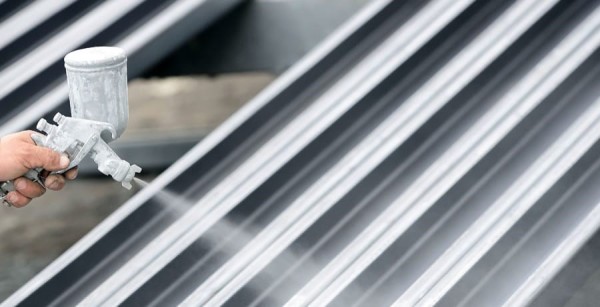
Intumescent paint, also called reactive paint, is a type of paint that reacts to heat. When it reacts, it swells to fifty times the thickness, which helps to protect a building in case of fire damage. Intumescent paint usually has this quality when exposed to temperatures greater than 50oc, and can maintain this strengthening benefit for up to two hours at temperatures reaching over 600oc.
The Different Types of Intumescent Paint
Plaster
This type of paint is designed to improve the fire resistance properties of plasterboard ceilings and walls, as well as general plaster. Plaster and plasterboard are believed to be able to withstand heat for around 20 minutes before disintegrating. However, when plaster intumescent paint is applied, this can be increased to up to an hour.
Timber
Intumescent paint for timber is designed to improve the strength of timber products in two ways. First, it helps to increase the length of time that timber can withstand heat, from pretty much nothing to an hour. Second, it helps to prevent flames from spreading along the timber’s surface.
Steel
This is the most common intumescent paint and is designed to increase the length of time that structural steel can withhold high temperatures before failing. The paint expands and creates an insulated barrier around the steel. This then enables steel to keep its load-bearing capacity for as long as two hours, at temperatures over 550oc.

Intumescent Paint – International Passive Fire
Why It Is Needed
Intumescent paint is needed for fire safety reasons. When a building is exposed to fire and high temperatures, it doesn’t take long for the materials used in the build to bend and buckle, ultimately leading to the building’s collapse. Intumescent paint helps to prevent this from happening. When used, the paint helps to decrease the intensity of the flames. It does this by lightly charring as it is burnt, making it a poor conductor. Because of this, materials used in the building can withstand much higher temperatures for longer periods of time, which gives any people inside the building a longer time to escape safely. It also gives emergency personnel time to put out the fire and save the building, where possible.
How to Apply
Because intumescent paint is so effective at preventing structural collapse, and is relatively cheap to buy, it is regularly used during construction. The paint can be applied by either spray or brush, as well as by machine. When applying, it is vital that drying times are adhered to correctly before applying second or third coats to ensure that the paint is providing the correct amount of protection to the material underneath it. A wet film gauge can be used to measure the thickness of the paint after application. Following application, a top coat can be applied for either decorative purposes, or to protect the intumescent paint underneath.
Although applying intumescent paint is relatively easy, it is best to hire a professional if you are unsure of your ability to use it correctly.




 POSTED BY
POSTED BY 

